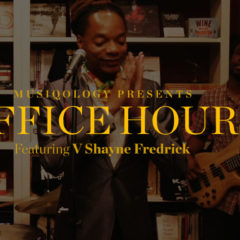Right on time for your spring fever to kick in, Duke University Press will release Kellie Jones’ most recent and much-anticipated book, South of Pico: African American Artists in Los Angeles in the 1960s and 1970s. It’s been quite the experience witnessing this work develop through the years. From its first iteration in the critically-acclaimed exhibition Now Dig This: Art and Black Los Angeles, 1960-1980 from 2011, in this new study Professor Jones fleshes out the fuller story of the key figures, institutions, and art practices of this vibrant, though under-appreciated scene.
And what a scene it was. Artists from this era assembled a lively and bustling visual world of freedom and imagination from the vestiges of segregation, housing discrimination and all manner of social discrimination. It was exciting following Jones as she tracked down stories, interviewed artists, visited studios and archives and curated the exhibition. The results of her dedication and unrivaled analytical skills are presented her in rich detail. Nobody does it better, folks. Get your sneak peek at the treasures packed on every page of this instant classic. Welcome to the world, South of Pico!
It’s been a busy few weeks for Dr. Jones, with an exhaustive feature in Amherst College’s magazine detailing her early days, college years trying to “change the world,” and career highlights. She was also featured alongside other art world luminaries such as Huma Bhabha, Shirin Neshat, Elizabeth Alexander, and more in an important Vogue magazine feature that highlighted women in the art world. “They don’t take no for an answer,” legendary photographer Lorna Simpson, who shot the feature, said. “They are creative visionaries whose passions and work have shaped the cultural landscape.”
On top of all of that press, Jones has readied South of Pico for its April 1 publication. Duke University Press has graciously shared the book’s introduction and front matter, which can be accessed HERE. The book is divided into four chapters (plus an introduction and conclusion) that begin with “Emerge: Putting Southern California on the Art World Map” and end with “Noshun: Black Los Angeles and the Global Imagination.”
“African American migration in the nineteenth and twentieth centuries was nothing less than black people willing into existence their presence in modern American life. It represents their resolve to make a new world in the aftermath of human bondage and stake their claim in the United States,” Jones writes. “My goal here is to understand and demonstrate how their work speaks to the dislocations and cultural reinvention of migration, its materials of loss and of possibility, and sense of reinscription of the new in style and practice.”


 Share On Facebook
Share On Facebook Tweet It
Tweet It








